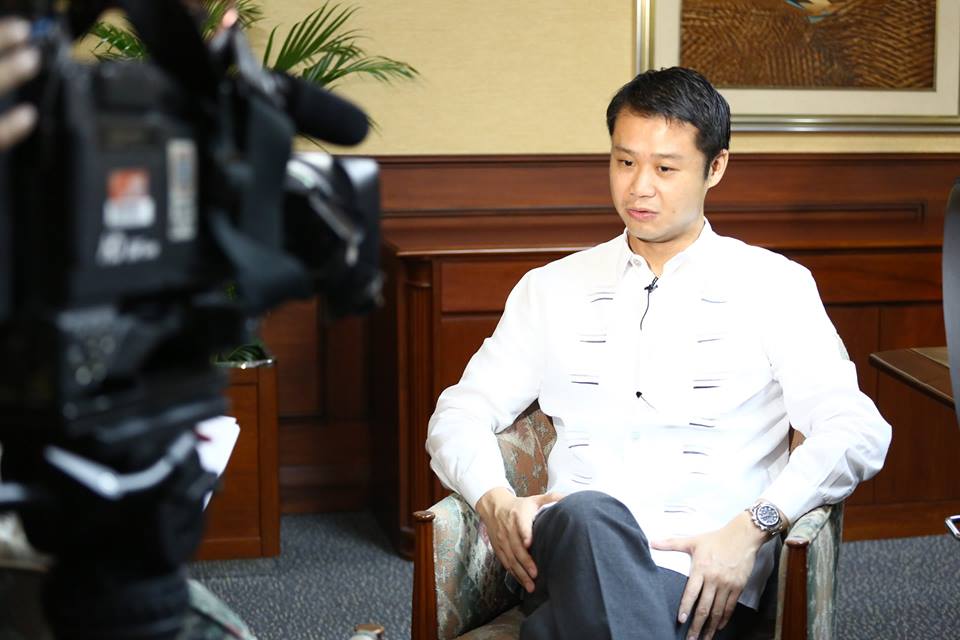
MANILA — A senior House official on Monday called for the strengthening of the ballistics database of the Philippine National Police (PNP)-Crime Laboratory Service amid the perennial problem of indiscriminate firing during Christmas season.
Valenzuela City Rep. Sherwin “Win” Gatchalian deplored that innocent people are either injured or killed by indiscriminate firing of private gun owners and uniformed personnel especially during the New Year revelry.
Jercy Decym Buenafe Tabaday, a grade four pupil at Bumagcat Elementary School in Abra, was hit by a .45-caliber bullet in the head during New Year’s eve and died hours later at the Abra Provincial Hospital in Bangued.
There have been over 60 incidents involving stray bullets as of Sunday.
“Unfortunately, most of these cases remain unsolved because law enforcement authorities cannot trace the firearms from which the recovered slugs supposedly came from. It is high time for the PNP to set up a firearms database by purchasing enough IBIS machines and training technicians who will operate these machines,” said Gatchalian in a statement.
He is referring to the Integrated Ballistics Identification System (IBIS), which was created to expedite the highly labor-intensive and time-consuming task of matching ballistics information in police investigations.
The Valenzuela solon pointed out that the IBIS technology was built and designed for forensic identification of ballistic information of firearms and is appropriate to use in any police department’s evidence or forensic unit.
However, he said that the PNP-Crime Laboratory Service only has two IBIS machines in Camp Crame, which make it impossible for CLS technicians to make a database of all the registered guns in the country numbering around 1.7 million base on the latest data culled from the Firearms and Explosives Office.
“The PNP should upgrade their database technology and firearms tracking technology. Every gun in the country should be accounted for and the unique features of each gun should be kept in the database through the IBIS technology,” Gatchalian said.
He said encoding the ballistics records of all the 1.7 million registered firearms in the country would be a tall order for the PNP, requiring the purchase of two IBIS machines for each police provincial headquarters with a Crime Laboratory Office.
This would mean a decentralization of the PNP-CLS’s ballistics department in all the 81 police provincial offices equipped with two IBIS machines and two firing tubes from which they gather the slugs and cartridges.
Ballistics science teaches that every firearm leaves unique identifying characteristics on the bullet and the cartridge during the firing process. The barrel of every firearm leaves lands, grooves, and specific marks, from the rifling — the winding pattern inside a barrel that spins the bullet to improve accuracy — on the bullet.
The firing pin leaves marks on the rear of the cartridge as it is struck, and the breech face leaves ejection marks on the side of the spent cartridge casing. These microscopic marks are similar to fingerprints. Just as no two sets of fingerprints are alike, no two firearms are the same.
The IBIS assists in the manual searching and identifying of potential candidate matches by automating the entire system and searching evidence of multiple crime scenes simultaneously. With every new image entered, IBIS compares the recovered evidence with existing images from prior crime scenes to identify possible matches. IBIS is able to search through volumes of existing images and prior evidence from crime scenes and suggests a small number of cases as potential matches.
The veteran solon said that in addition to matching evidence from an ongoing or current investigation, IBIS could be used to link ballistic information to previous investigations and to guns used in crimes — that is, firearms that have been used in the commission of multiple crimes but that may not have been recovered in the investigation.
According to Gatchalian, he is thinking of a filing a resolution calling for a congressional inquiry into the current state of the PNP-Crime Laboratory’s ballistics database with the end in view of crafting a law that will make it mandatory to provide two IBIS machines per provincial police office.